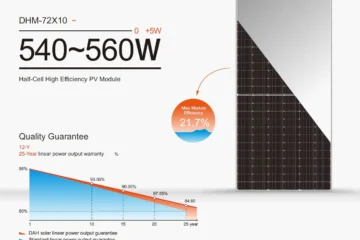Seamless Support: Transforming Energy Customer Service With Smart Solutions

What opinions do your clients have concerning emerging energy technologies? The 2021 State of the Consumer Report from the Smart Energy Consumer Collaborative provides valuable information about the attitudes, worries, and reasons for adoption. One of the findings in this year’s research from SECC is that consumers are starting to associate smart energy with reducing climate change. Products with smart energy capabilities are appealing to customers in all market areas. The environment and smart energy are important topics of interest to lower-class customers. More consumer education is required on how to evaluate software or other technologies. To fulfill the potential of modern technologies like AMI and positive electrification, consumer education and engagement are crucial.
Climate change and smart energy customer service
Green Innovators, Tech-Savvy Protégés, and Movable Middle, three of SECC’s recognized client segments, all concur that “electricity is becoming cleaner and more renewable every day.” If customers were better aware of the initiatives offered by their electricity providers, they “might participate more in energy efficiency and conservation efforts,” according to the report. Customers from the Tech-Savvy Protégé and Movable Middle categories in particular said that their energy utility hadn’t promoted anything innovative enough. They wish their utility had communicated their billing procedure and ways to reduce bills more openly. Regardless of their degree of energy involvement, consumers generally agreed that they wanted political and community leaders to give climate change issues top priority. Customers desire investments made in infrastructures that would enable more electric automobiles, electric charging stations, and electric public transportation, specifically for the electrification of transportation.
Industry participants thought that if consumers knew how electrification works and how it may impact their lives, they would be better able to appreciate its benefits. The key lesson for utilities is that, although consumers may be more inclined to embrace environmentally friendly electrification, the energy sector must do more to inform and highlight these advantages.
Interest from customers in smart energy products
All client segments showed a greater interest in smart home technologies, according to SECC. Specifically, Google Nest had the most mentions in interviews, whereas Alexa and Google Home received fewer mentions. According to research, “the desire to own the latest ‘cool’ technology tended to be the driving force behind smart energy customer service product purchases.” Smart thermostats are among the “gateways” for upcoming purchases of smart home technologies. According to SECC, when a customer moves and reviews their existing equipment, they are also more likely to upgrade their smart homes.
Customers’ top two concerns when looking to purchase new smart home technologies were cost and functionality. 51% of Green Innovators said they would convert to high-end products like electric automobiles if the price was the same as a conventional vehicle. Although they want to be confident that these changes would save them money in the long run, consumers with lower incomes are also interested in making the switch to smart home products. When interacting with this target market, SECC advises emphasizing “the benefits most meaningful to these consumers.”
The primary lesson for utilities is
To encourage use across all client categories and financial levels, it is imperative to comprehend the obstacles to the adoption of smart homes.
Customers with lower incomes who are drawn to smart energy
The report’s opening premise, as stated by SECC, is that “lower-income consumers have as varied values, interests, and motivations when it comes to engaging with energy as do consumers with more disposable income.” According to SECC, there are various personas to comprehend when attempting to connect with this segment:
environmentally conscious consumers who place a high importance on environmental preservation and air quality. Receptive consumers to smart energy customer service who would like to employ these technologies but feel that they are too expensive. Decliners of smart energy, those who don’t think “people like me” can benefit from smart energy customer service technologies
Climate change skeptics
people who think there is no real threat from climate change. Cost affects all customers, but those with lower incomes are particularly susceptible to it; 47% of SECC respondents stated that “the money I can save” has an impact on their purchasing decisions. When it comes to energy investments, customers are varyingly interested in comfort, convenience of use, and environmental protection.
SECC’s study provides insight into consumers with lesser incomes
Concern for the environment was voiced by 81%, either openly or implicitly. 35% of people said they would be extremely interested in rooftop solar panels if their provider helped. 33% expressed a strong interest in community solar power. The primary distinction between customers with lower incomes and other consumers, according to SECC, is access. “While lower-income consumers encounter more restrictions, consumers with higher means are better equipped to take use of the entire spectrum of smart energy customer service products and programs.” Energy utilities must comprehend these consumers’ needs, eliminate or lower obstacles, and take use of community collaborations if they hope to successfully convert these consumers. The key lesson for utilities is that in order to guarantee that low-income neighborhoods may benefit from lower prices and other advantages of clean transportation, infrastructure planning must take these communities’ needs into account.
More education is required for utility customers
Although consumers are aware of the benefits of energy efficiency, they are unsure of how to assess whether programs or goods would affect their own energy use. The SECC study reveals that although consumers’ interest in smart energy customer service is growing, they are more inclined to interact with energy-enabled smart devices than with programs provided by their power providers. More importantly, users report being satisfied with their smart devices but are unsure if this is having an impact on their expenses. Although consumers are driven to buy the newest smart technology, they lack the necessary resources to help them make decisions or determine whether a program or product will save them money or energy. Energy utilities must therefore provide incentives and resources to help customers comprehend possible savings, such as bill effect estimates and calculators. Energy utilities must also offer rate plan studies, bill guarantees, shadow billing, and other instruments that aid in calculating savings.
Additionally, they must tailor their products to particular customer groups. According to SECC research, 69% of consumers with lower incomes “definitely would or would consider sharing their data in exchange for personalized tips on how to save money while maintaining comfort” or a monthly report that displays their energy usage data.
Technology for fresh energy requires education
In order to effectively promote good electrification or deploy new technologies like AMI, energy suppliers must learn to communicate energy in a way that aligns with customer values and avoid making assumptions about what consumers already know or desire. SECC emphasizes that research on the needs and behaviors of modern smart energy customer service consumers demonstrates that, once they purchase a “gateway” product, consumers have an appetite for more. However, whether or not they follow through is largely dependent on their initial motivations for engaging with energy, which vary greatly based on their values. When the timing and the content suit their main drivers, even the most disengaged customers—those in the Energy Indifferent segment—can be persuaded to take action. Specifically, the implementation of AMI has emphasized the significance of the relationships that energy providers and customers have. Consumers today have more options than in the past, and regardless of market niche or socioeconomic status, they place a high value on environmental protection. They seek objective, tailored information and demand evidence of value, according to SECC.
Last Thoughts
AMI can foster a more engaged and active client base by offering insightful information on how customers might combine goods and services. The primary lesson for utilities is that they must pay attention to their consumers’ needs and consider their suggestions while developing new initiatives. Success is the result of cooperation between customers and community partners.
Energy utilities should grow along with the smart energy customer service industry as it continues to flourish. Energy utilities can benefit greatly from the research and data provided by SECC as they navigate this path. Some customers list functionality as a barrier to adoption in addition to cost. Energy utilities should use education, client testimonials, and practical demonstrations to engage these consumers. Customers with lower incomes, in particular, require utilities to provide more tailored information that accentuates the advantages of their products or programs. The key lesson for utilities is that if they want their consumers to convert, they must engage heavily in individualized education and communications.
Leave a reply
You must be logged in to post a comment.











